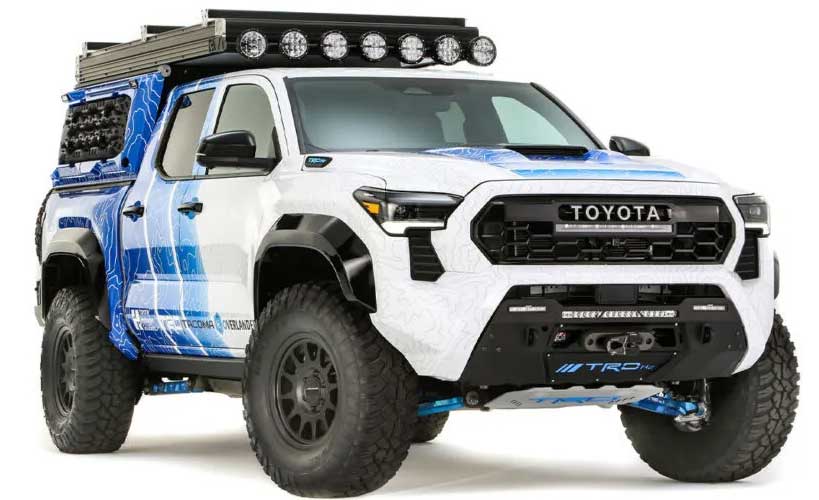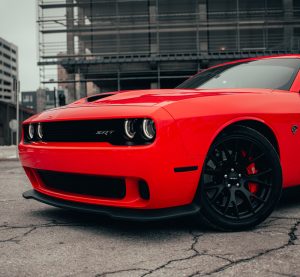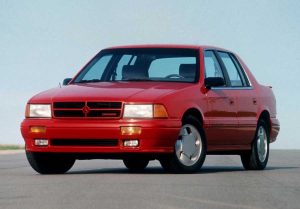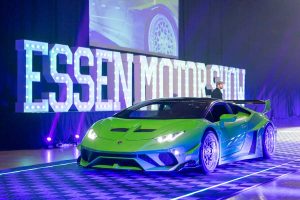Toyota Tacoma H2-Overlander Reimagines Off-Roading

Toyota Tacoma H2-Overlander
Toyota is making a bold case for hydrogen-powered adventure with the Tacoma H2-Overlander Concept, revealed at the 2025 SEMA Show. Developed by Toyota Racing Development (TRD), the prototype fuses zero-emission technology with the grit and range demanded by overlanders and trail riders. It is the latest expression of Toyota’s multi-pathway strategy toward carbon neutrality—proof that capability and conscience can coexist.
At the core of this concept is a fuel cell electric vehicle (FCEV) powertrain derived from the production Mirai sedan. TRD adapted the Mirai’s second-generation fuel cell stack and packaged three hydrogen tanks inside the Tacoma’s frame rails. The tanks hold a total of 6 kilograms of compressed hydrogen, and their placement helps optimize weight distribution while protecting critical components from trail hazards. The setup underscores a key advantage of hydrogen for off-road use: refueling takes minutes, not hours, which is crucial when the next trail or campsite can be days from the nearest fast charger.
Power delivery is equally forward-looking. A 24.9-kWh lithium-ion battery pack works with two electric motors—an eAxle at the rear rated at 188 kW and a 225-kW motor up front—to produce a combined 547 horsepower. The result is instant, controllable torque and near-silent operation that elevates the driving experience. Without the roar of a combustion engine, the truck moves with the electric immediacy of a high-performance EV, yet carries the promise of long-range travel thanks to quick hydrogen fills.
TRD didn’t stop at propulsion. The H2-Overlander is engineered for genuine off-grid competence. A billet long-travel suspension kit, developed by TRD, stretches the truck’s reach and articulation, while Fox 2.5 Performance Elite Series shocks help manage repeated hits and keep the chassis settled over rough terrain. Front brakes borrowed from the Tundra add stopping muscle, and 17-inch wheels wrapped in aggressive 35-inch tires provide the bite and clearance necessary for rock gardens and washouts. The body wears heavy-duty bumpers, with an integrated front winch to assist in recoveries and route clearing, essentials for anyone who ventures beyond graded fire roads.
Self-sufficiency is central to the build. A 15-kW power takeoff system allows the Tacoma to function as a mobile energy hub. With two NEMA 14-50 outlets, it can run an off-grid camp, power tools, or even charge two EVs at the same time—capabilities that turn the truck into a support vehicle for group expeditions and a lifeline in emergencies. TRD has also developed a patent-pending water recovery system that captures and filters the fuel cell’s only byproduct—water vapor. The reclaimed water isn’t intended for drinking, but it’s a practical source for washing, rinsing gear, or a quick camp shower in the backcountry.
Overlanding comfort and durability get thoughtful attention, too. A custom camper top built from recycled carbon-fiber panels reduces weight while boosting resilience. Up top sits a rooftop tent ready for rapid setup at day’s end, while extensive exterior lighting improves visibility on technical trails and creates a welcoming glow at camp. The concept’s exterior emphasizes function first—everything fitted to earn its place on long, self-supported journeys.
As a SEMA showcase, the Tacoma H2-Overlander is a concept, not a production announcement. Yet its message is clear. Hydrogen fuel cell technology isn’t just for sleek sedans and urban commuters; it can power rugged, high-output trucks that thrive far from paved roads and plug-in infrastructure. For overlanders who prioritize range, uptime, and environmental stewardship, this approach offers an intriguing middle path between conventional internal combustion and battery-only electrics.
Of course, the challenge facing any FCEV remains the same: refueling infrastructure. Hydrogen stations are still scarce, particularly in the rural regions where overlanders roam. That reality tempers short-term expectations for a showroom-ready hydrogen Tacoma. Still, concepts like the H2-Overlander serve a valuable purpose. They demonstrate what’s possible when packaging, powertrain technology, and real-world use cases align. They also push the industry conversation beyond either-or debates and toward a more flexible ecosystem of clean propulsion.
Toyota’s commitment to hydrogen research and development signals that fuel cells will remain a core pillar in its broader strategy. Whether the next step is a pilot program, a limited-run variant, or technology transfers to other platforms, the lessons from this truck are already meaningful: smart packaging can protect hydrogen storage in off-road conditions; battery buffers can deliver strong, responsive performance; and onboard power can add new dimensions to how adventure vehicles support their occupants and communities.
The Tacoma H2-Overlander Concept doesn’t claim to be the one answer for every trail. Instead, it opens a new route—a vision of quiet strength, quick refueling, and low-impact travel that lets the landscape, not the engine, do the talking. For those who dream of going farther while treading lighter, this hydrogen-powered prototype offers a compelling glimpse of what sustainable exploration might feel like in the years ahead.
“Protect your classic with a custom car cover from Cover Company.
Learn more at https://www.cover-company.com”






